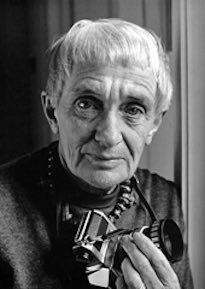Pioneering documentary photographer Dorothea Lange, challenged in her childhood by contracting polio and by the abandonment by her father, decided at a young age to become a photographer. After graduation, she obtained work in leading photographers” studios. She became an empathic observer of people in the context of their lives by walking through many parts of New York City.
In 1918, Lange and a friend planned to work their way around the world, but were stranded in San Francisco after losing their savings in a robbery. Lange settled in San Francisco, married artist Maynard Dixon and raised their family of two sons. She created commercially successful studio photographs but her most influential work became focused on the visual depiction of people’s changing lives and the interrelationships of people, environment, and major historical events.
Lange became one of the outstanding photo-documentarians of farmers and migrant workers when she worked for the Farm Security Administration during the Great Depression. Her famed photograph Migrant Mother (Nipomo, 1936) has been acclaimed as the summation of the rapidly changing realities of the time. In 1940, Lange became the first woman awarded a Guggenheim Fellowship in photography.
In 1942, Lange and Ansel Adams photographed Richmond, California’s rapidly changing wartime communities. Lange sensitized America and the world to the injustices of the Japanese American internment of the Second World War, through her War Relocation Authority photographs.
After the war, Lange traveled the world with her second husband Paul Taylor, creating photo-essays for leading magazines such as Life and Fortune. She chronicled the new industrial expansion of San Francisco, the societal change from rural small town communities to mass urban culture in America, and photographed scenes across the globe. Her dedication, breadth, compassion, empathy, graphic power, and superb technique set standards that stand today.

